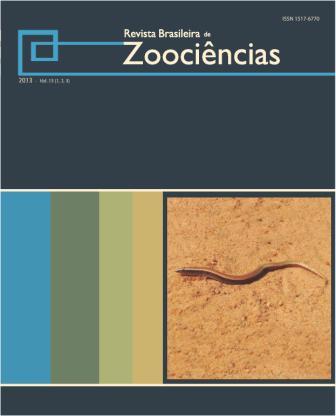Population structure of the tanaid Sinelobus stanfordi (Richardson, 1901) (Crustacea, Tanaidacea) associated with roots of the water hyacinth Eichhornia azurea (Sw.) Kunth. (Liliiflorae, Pontederiaceae), from a coastal lagoon in southern Brazil
Resumo
This study aimed to investigate the population structure of Sinelobus stanfordi (Richardson, 1901) (Malacostraca,Tanaidae) in a coastal lagoon in the North coast in the Rio Grande do Sul state. The collections were performed weekly on banks of the aquatic hyacinth Eichhornia azurea (Sw.) Kunth during three months. Samples of water hyacinth were manually collected and washed on a sieve of 0.250μm mesh size. In the laboratory, the material was sorted and the tanaid lengths were measured and classified into following morphotype categories: Manca, Juveniles, Non-Reproductive Females (NRF), Preparatory Females (PREPF), Ovigerous Females (OVF) and Males. The distribution by frequency of body length classes presented a higher abundance of manca in the class of 0.75mm; juveniles in 2.19mm; non-reproductive females in 2.5mm; preparatory females in 2.7mm; ovigerous females in 2.85mm and males in 2.81mm. The average of sexual rate was 3.1:1 (females: males). It was observed the recruitment and predominance of juveniles in the eleven studied weeks, and the presence in lower proportion of PREPF, OVF and males. Based on the analyses of the population structure observed and data found in the literature, became evident the presence of juveniles, females and males during all the year, beyond a continuous reproduction activity of the species. The results have also suggested the species seems to have an opportunistic behavior, being able to colonize a high diversity of substrates.
Keywords: Coastal lagoon, macrobenthos, populational structure, Tanaidacea.



